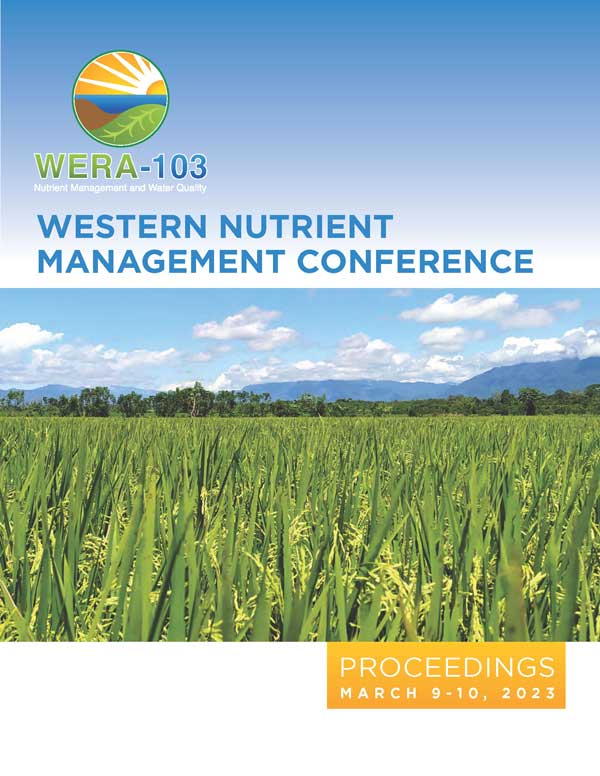Download the Conference Proceedings
Get your copy of the 2023 Western Nutrient Management Conference Proceedings today! Download the PDF file and view all of the available proceedings.
Proceedings
Authors
| Filter results1 paper(s) found. |
|---|
1. Economic Model to Determine Optimum Nitrogen Rates for Small GrainsNitrogen (N) fertilizer is generally the highest input cost for Montana grain growers; therefore, it has become imperative that a tool be developed to assist crop advisers and farmers in determining economically optimum N rates (EONR). Data from all available MSU-conducted N fertility trials were gathered for spring wheat, winter wheat, and barley. Only the data sets for dryland fields following fallow were deemed large enough to have confidence in any resulting models, and all other data were... C. Jones, D. Griffith, G. Jackson |
